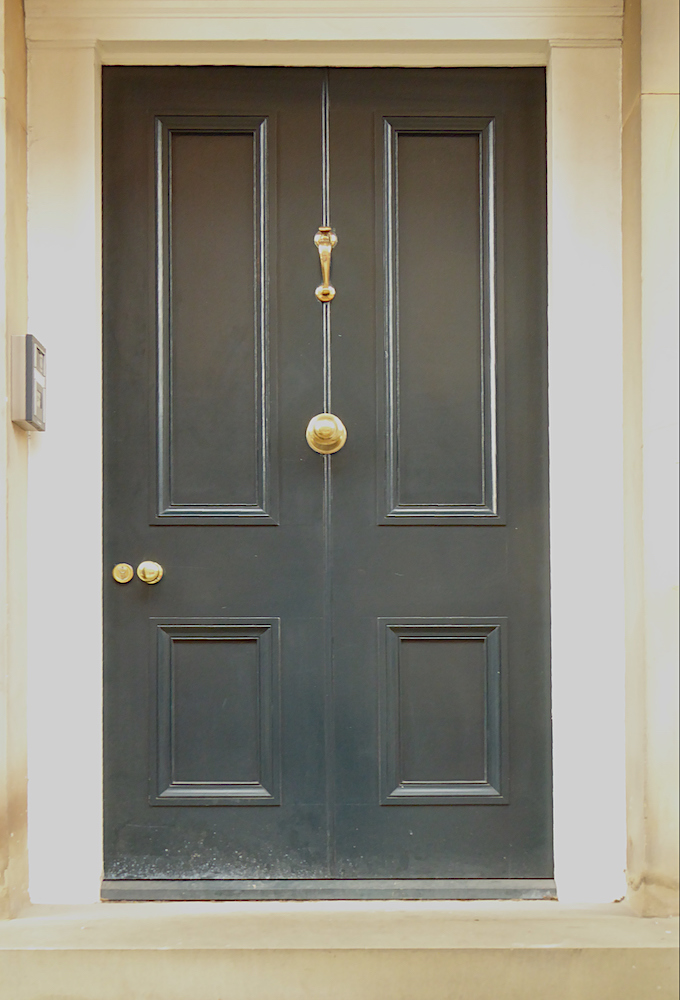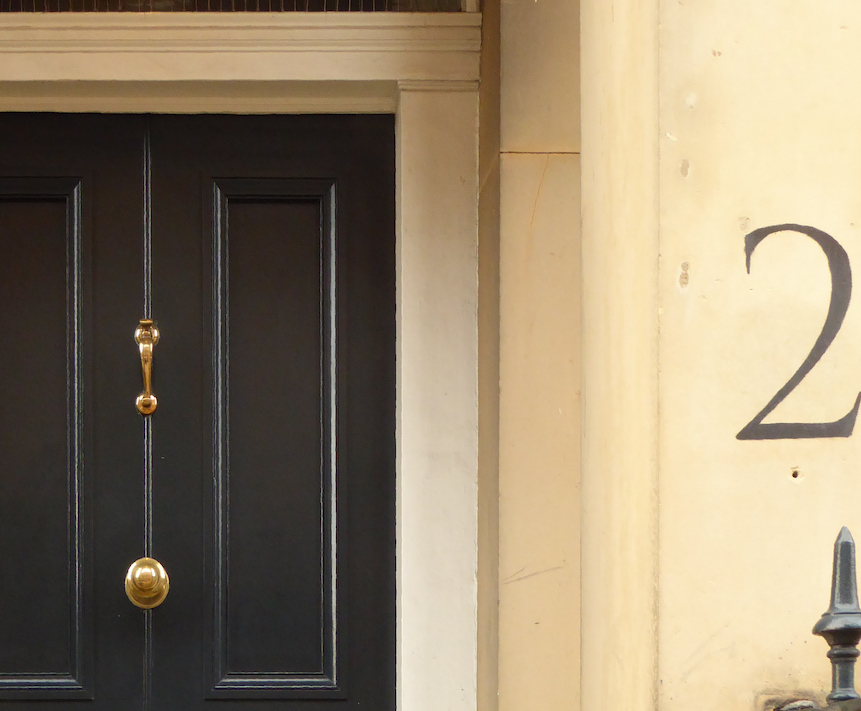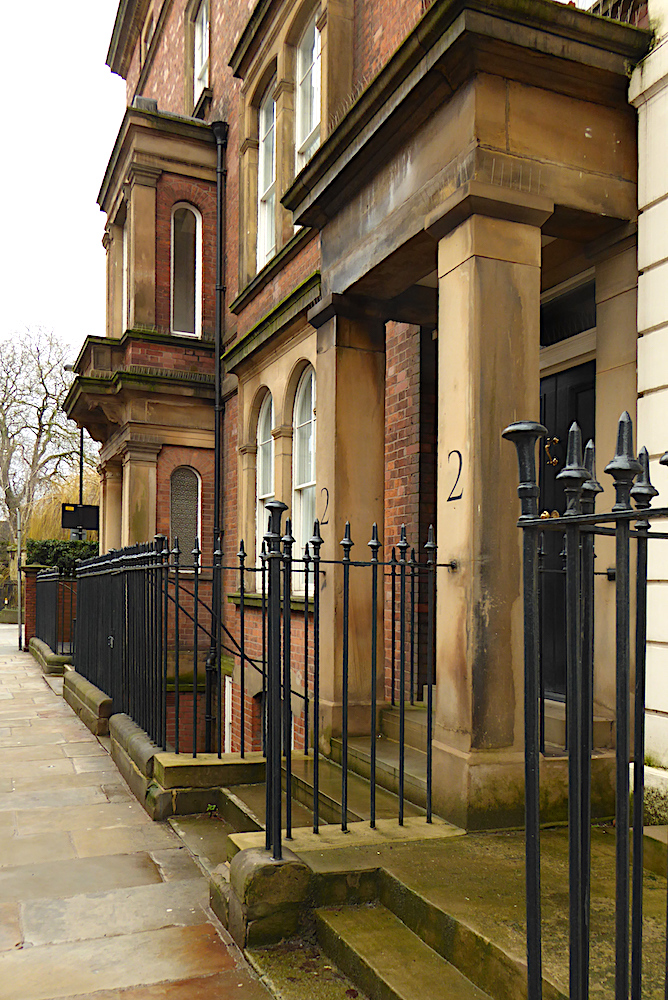Photographs by the author. You may use these images without prior permission for any scholarly or educational purpose as long as you (1) credit the photographer and (2) link your document to this URL, or cite it in a print one. [Click on the images to enlarge them.]


Shown above are two views of the impressive south front of no. 4 Museum Street, one of two attached houses by J. B. and W. Atkinson, 1851, both Grade II listed. On the left, the house is seen straight on; on the right it is seen at a slight angle from across Library Square, with a glimpse of the view up Duncombe Place to the west towers of York Minster. The range continues on this side (the east side) with the attached No. 2 Museum Street, as shown on the right below. Both houses are in buff-orange brick, with stone facings on windows and doorways, and are Italianate in style (see listing text, and Pevsner and Neave 226). There are four floors and a basement.


Left: The frontage along Museum Street. Right: The rear wall of both properties (rarely so accessible). Note that there are also basement windows on Museum Street.
On the east frontage along Museum Street, No. 2 is a smaller house than no. 4, but the details are continuous across the facade, perhaps to make both houses look larger. This effect was also achieved by the original design of the pair of houses in which the Atkinson brothers later had their own office, on Micklegate.
These two houses were both commissioned by Dr Thomas Laycock (1812-1876), an active medical man with wide interests, ranging from brain function to public health. The house at no. 4, being the bigger and grander, was probably designed for him, but in 1855, he moved his family to Edinburgh when opportunity arose for him to further his career as Professor of the Practice of Physic there. This may not have pleased his wife, as the decoration of their new house had recently been completed (James 57). In the 1885 Directory of York, the occupant of no. 9 Museum Street, probably the no. 4 shown at the top of this webpage (the houses have been renumbered), was William Hamerton Jalland, FRCS.



Left to right: (a) Front door of no. 4, the same design for each house. (b) The entrance to No. 2. (c) Looking along the Museum Street frontage.
According to the listing text, the building has a flat roof; the iron balustrade along the top of the south front is a nice touch. There are also good iron railings on south and east fronts; these are included in the listing.
Obviously a prestigious address, Museum Street became even more important after the building of Lendal Bridge 1861-3 (Pevsner and Neave 203). On crossing the river from the direction of the railway station, a fine view of the west towers of the Minster is seen. After the bridge was built came the Yorkshire Club (1868-70), Club Chambers (1873) and then Museum Lodge (1874) and the drinking fountain (1880). To the north, Little Blake Street was replaced by the wider Duncombe Place, laid out in 1859-64. The "gentrification" of this axis was completed with St Wilfrid’s, the Roman Catholic pro-cathedral from when it was built in 1862-4 until 1878, and gentry housing at no 1-3 (also by the Atkinson brothers); on the east side, a masonic hall (1862-3), official buildings for the District Probate Office (1885) and the (charitable) Dispensary (1897-99).
Related Material
Bibliography
Directory of York. Published by George Stevens, 1885.
James, Frederick Ernest. The Life and Work of Thomas Laycock 1812-1876. PhD thesis, 1996. University College, London.
Numbers 2 and 4 and railings attached to front and left side." Historic England. Web. 25 March 2021.
Pevsner, Nikolaus, and David Neave. Yorkshire: York and the East Riding. New Haven and London: Yale University Press, 2002.
Created 24 March 2021